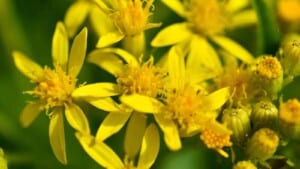Watermelon (Citrullus lanatus) is grown in all parts of the country, but the warmer temperatures and longer summers of the south are especially favorable for this juicy treat. In northern states select short-season varieties, start seeds early indoors, and do whatever it takes to protect this cold-sensitive crop from frost.
Grow watermelon – available in many shapes and sizes — in well-worked soil under full sun after all danger of frost has passed. Give them plenty of room to roam and keep the patch well-watered. When the melon responds to a rap from your knuckles with a good resonant thunk, it’s ready!
Watermelon is not only low in calories it’s packed full with nutrients and valuable health benefits. Thirst-quenching fruits are an excellent source of potassium, vitamins A and C, dietary fiber and beta-carotene. They also include super-sized amounts of lycopene, a powerful anti-cancer compound. So go ahead and eat it up!
Fun Fact: Early explorers used this flavorful fruit to store water, similar to a canteen.

FREE SHIPPING!
Watermelon Seeds
This great summer treat is even better when you grow it yourself.
View allChoose from a large selection of heirloom watermelon seeds available at Planet Natural. Planting instructions are included with each packet and shipping is FREE!
Quick Guide: Planting, Growing & Harvesting Watermelon
- Choose a watermelon based on your climate — short-season varieties exist!
- Start seeds indoors or choose nutrient-rich soil outdoors in full sun
- Warm the soil and provide additional coverage for cooler weather
- Water and fertilize regularly for optimal results
- Provide plenty of space for vines and fruit
- Consult a clairvoyant to determine when to harvest — it’s an art form
- Pests and diseases include cucumber beetles, aphids, mites, squash bugs, fusarium wilt, anthracnose, alternaria leaf spot, and curly top
Site Preparation
Select a site where your plants will get full sun and good air circulation. A gentle, south-facing slope is ideal. Watermelons grow in many kinds of soil, but prefer a light, sandy, fertile loam that drains easily. Add generous amounts of manure, compost and leaves to your garden and work the soil well prior to planting. Melons like lots of water, so keep the soil moist at all times.
How to Plant
In cooler climates, start watermelon seeds indoors 3-4 weeks before the last frost date and watch the weather carefully before planting outdoors.
For direct seeding, soak seeds in compost tea for 15 minutes prior to planting. Plant in hills 1/2 to 1 inch deep. For most varieties, sow two to three seeds per hill, spacing the hills 8 to 10 feet apart. Thin seedlings in the hill to two seedlings one week after they have germinated. Small bush varieties may be spaced 3 feet apart.
Transplants
If black or clear plastic was used to pre-warm the bed, cut holes in the plastic and set the plants 1/2 to 1 inch deeper than they were planted in their containers. Water thoroughly after transplanting.
Watermelons are heavy feeders. Apply an organic fertilizer during planting. Spray plants with liquid fertilizer and seaweed extract throughout the garden season. Cut back on nitrogen levels after flowers form. Continue with phosphorous and potassium applications until just before harvest.
Tip: Use Harvest Guard® row cover to warm the air and soil around heat-loving crops. It can also be used as a barrier to protect plants from invading pests.

Harvesting
Determining when to harvest watermelons can be difficult and requires some experience. For the most part when ripe, the curled tendril at the stem end dries to brown, the underside of the fruit turns yellow or cream colored, and the melon will yield a deep, resonant sound when thumped.
Allow 80-90 days for bush varieties to reach maturity and 90-100 days or more for the larger varieties.
Insect & Disease Problems
Cucumber beetles, aphids, mites, squash bugs, fusarium wilt, anthracnose, alternaria leaf spot, and curly top are some of the problems home gardeners should be on the lookout for. Visit our Pest Problem Solver for pictures, descriptions and a complete list of safe, effective remedies.
Seed Saving Instructions
Watermelons will cross-pollinate, so isolate 1/2 mile from other varieties to maintain purity. When fruit is ready to eat, the seeds are also mature. Collect seeds and wash gently with a mild dishwashing soap. Rinse thoroughly and allow to dry.
Other Fruit and Berry Guides from Planet Natural:
Complete Guide to Plant, Grow, and Care for Pineberry
What is Yellow Watermelon? And How to Grow it Easily at Home
How to Grow Strawberries: The Complete Home Gardener’s Guide











